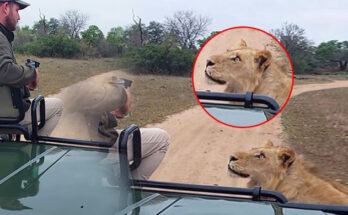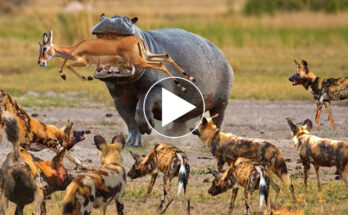An injured baby dolphin, found almost drowning on the eastern coast of Thailand, is making vast improvements thanks to a team of volunteers.
When fishermen discovered the sick Irrawaddy dolphin calf, he was unable to swim and was drowning in a tidal lagoon off the coast of Thailand’. The fishermen called marine conservationists right away, who gave them advice on how to care for the youngster until a rescue team could arrive.
The infant was given the name Paradon, meaning ‘brotherly burden,’ because everyone involved understood that it would be difficult to save the dolphin’s life. Irrawaddy dolphins may be found in three rivers in Myanmar, Cambodia, and Indonesia as well as the shallow coastal waters of South and Southeast Asia.
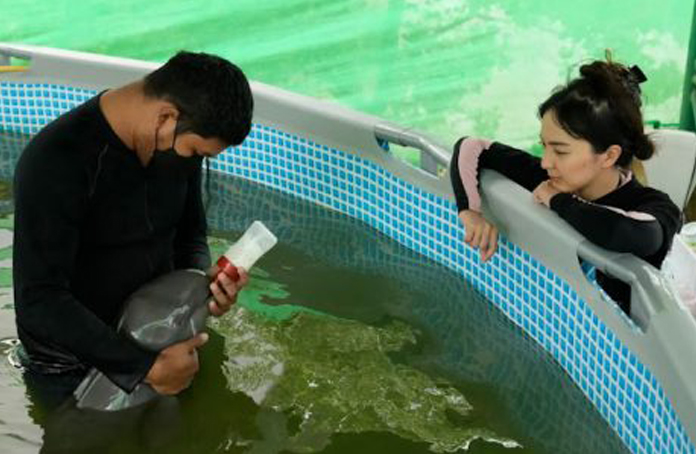
Loss of habitat, pollution, and fishing practices that catch dolphins accidentally alongside other species are all reasons they are listed as a vulnerable species by the International Union for Conservation of Nature. Thailand’s eastern coast, which borders Cambodia, is thought to still be home to 400 Irrawaddy dolphins, according to officials from the marine research institute.
Numerous vets and volunteers have helped take care of Paradon at the facility in Rayong on the Gulf of Thailand ever since he was discovered by the fisherman on July 22. “We said among ourselves that the chance of him surviving was quite low, judging from his condition,” Thanaphan Chomchuen, a vet at the institution, said.
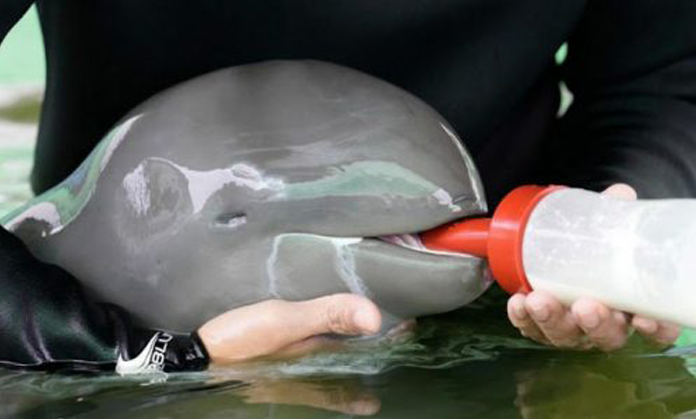
He was put in a saltwater pool, his lung infection was treated, and volunteers were recruited to keep watch over him constantly. To keep him from drowning, they have to hold him up in his tank and give him milk via a feeding tube at first, then a bottle once he has gained some muscle.
Each eight-hour shift includes a staff veterinarian, one or two volunteers, and other employees who are responsible for the water pump and filter and producing milk for the calf during the day. After a month, Paradon is getting better. The calf, which is thought to be between four and six months old, is now able to swim and shows no indications of illness.

However, despite the team’s best attempts to feed him every 20 minutes or so, the dolphin, who was about 27 kilos (59 pounds) and 138 centimeters long (4.5 feet) on July 22, is still weak and doesn’t consume enough milk. A 32-year-old financial advisor named. Thippunyar Thipjuntar is one of the numerous volunteers that show up for a babysitting duty with Paradon.
With Paradon’s round baby face and curved lips that resemble a grin, Thippunya claimed she couldn’t help but become close to him and worry about his growth. “He does not eat enough but rather just wants to play. I am worried that he does not receive enough nutrition,” she told The Associated Press on Friday as she fed the sleepy Paradon.
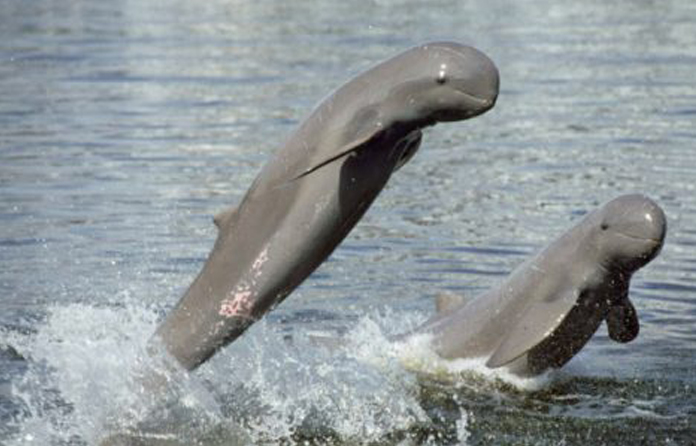
“When you invest your time, physical effort, mental attention, and money to come here to be a volunteer, of course you wish that he would grow strong and survive.” Until he is weaned from milk and is ready to forage for his own food, Paradon will require long-term care, maybe for up to a year, according to Sumana Kajonwattanakul, director of the marine center.
“If we just release him when he gets better, the problem is that he he won’t be able to have milk.” “We will have to take care of him until he has his teeth, then we must train him to eat fish, and be part of a pod. This will take quite some time,” Sumana said. Irrawaddy Dolphins (Orcaella brevirostris) jumping from water. Captive, Thailand. The people who care for Paradon think the prolonged careful loving care is worthwhile.
“If we can save one dolphin, this will help our knowledge, as there have not been many successful cases in treating this type of animal,” said veterinarian Thanaphan. “If we can save him and he survives, we will have learned so much from this.” Secondly, “I think by saving him, giving him a chance to live, we also raise awareness about the conservation of this species of animal, which are rare, with not many left.”


